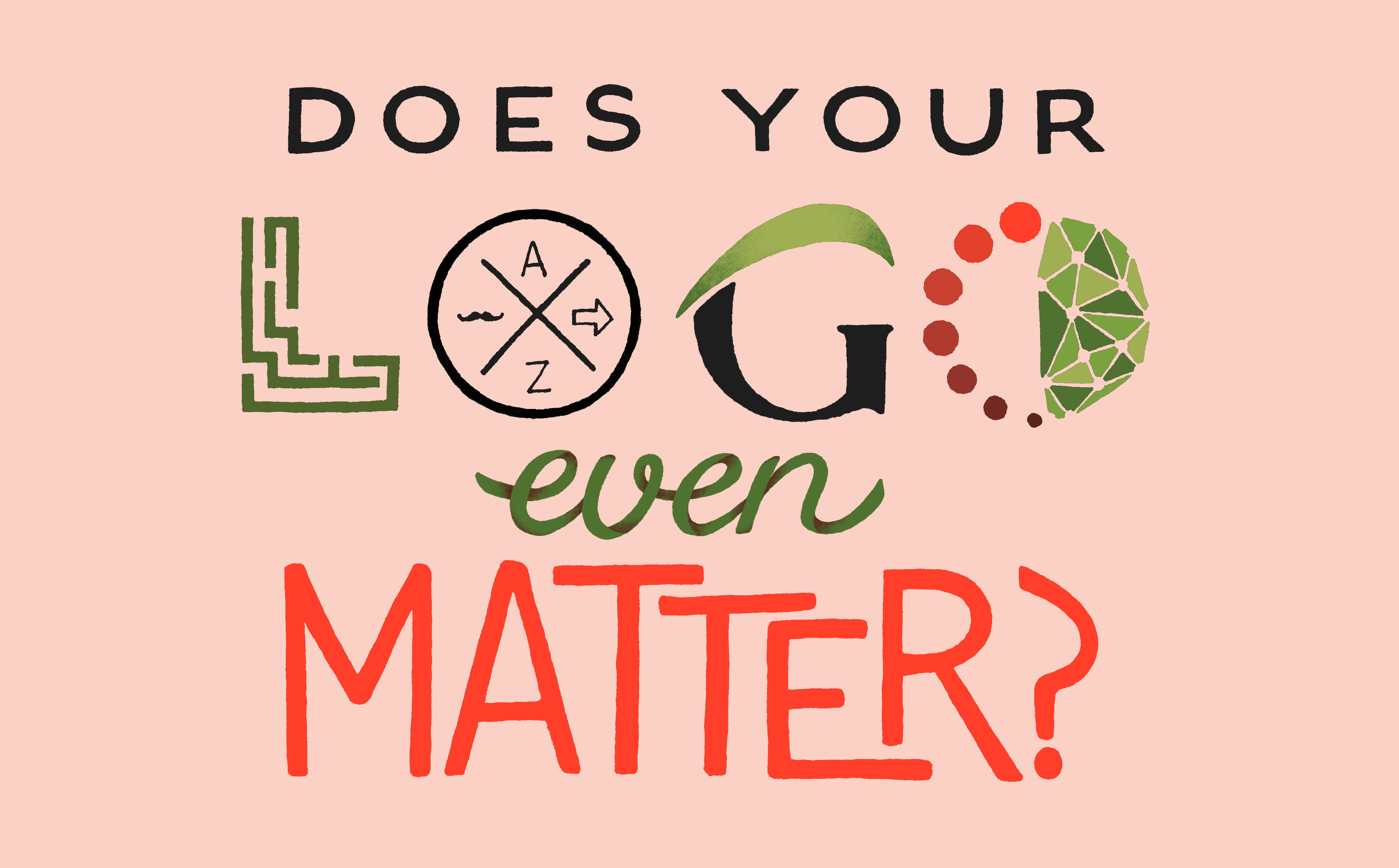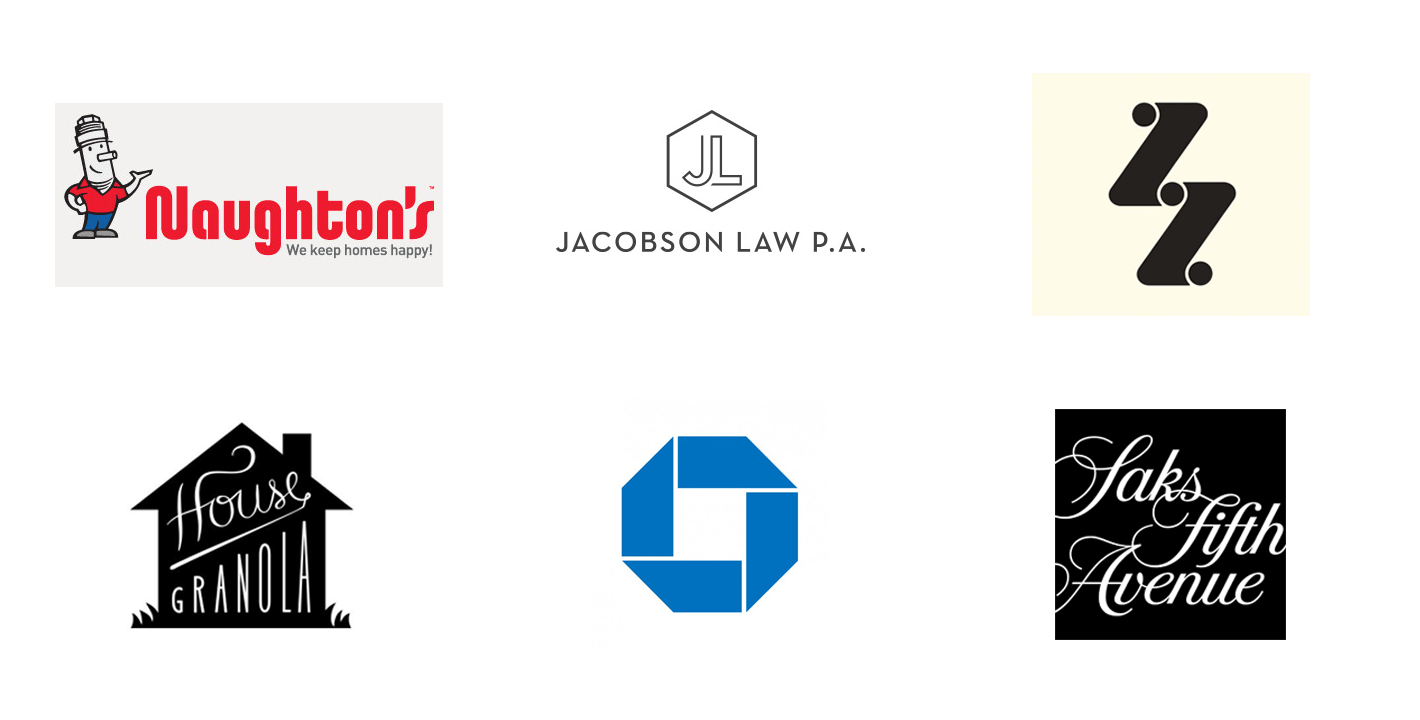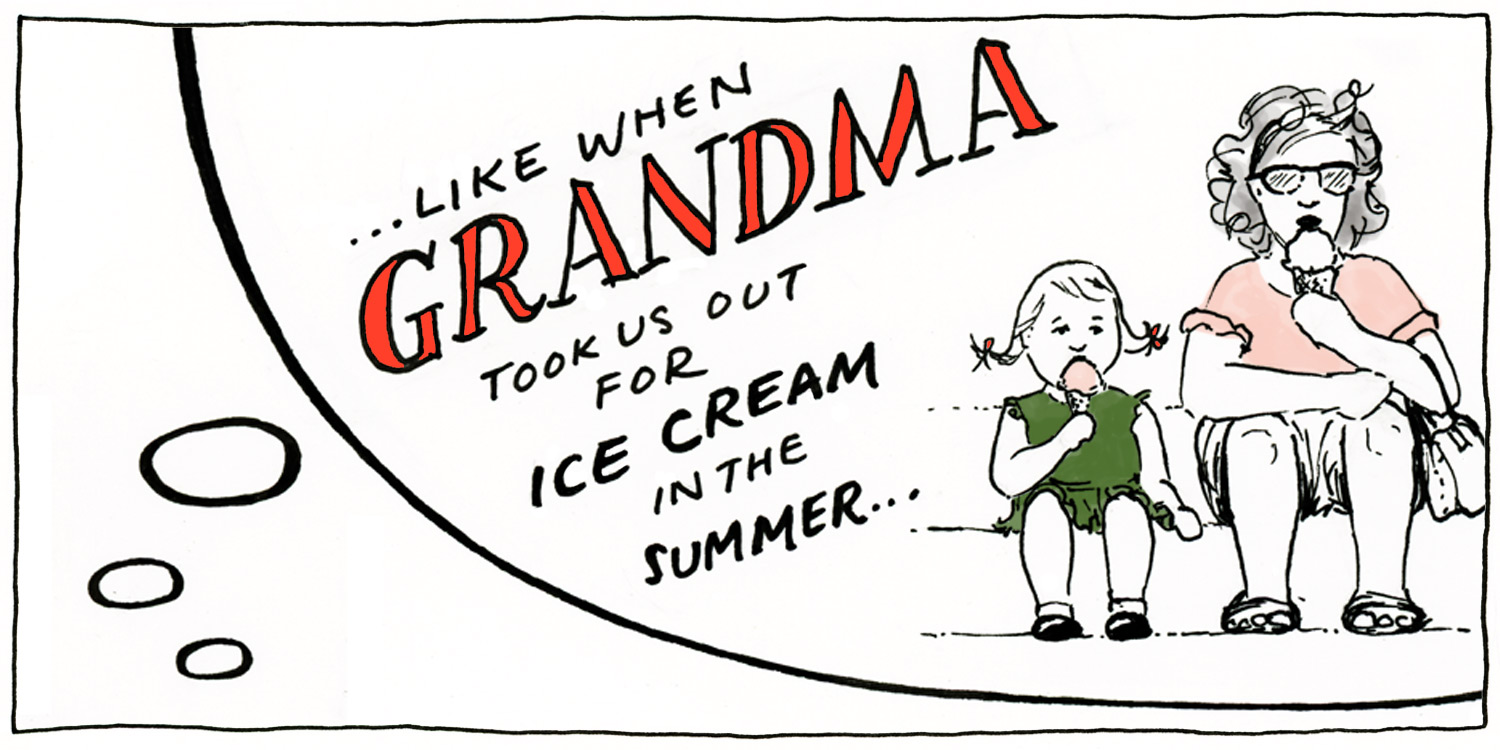
Does Your Logo Even Matter?
Let’s be real—I know you’ve been to Target and wondered what was up with their logo. Did they really pay someone good money to design a circle and a dot? Or those redesigns of major brands that cost millions of dollars that people love to hate.
So what value does a logo actually bring to a company? Does it even matter? The answer is, it depends. But first you need to understand what a logo is supposed to do. Which is—what, exactly?
A logo is a symbol for your company.
Let’s unpack that a bit.
Customers familiar with your company have thoughts and feelings about it. They know they always get friendly service at your coffee shop and the scones are delicious. Or that when they bring their car to your repair shop, you’re going to be straight with them about what needs to get fixed, and explain it to them in a way they understand. Or when they fly a certain airline, they might have to give up their seat or else get beaten. These impressions people have of your company is what the cool kids call your brand.
Your customer knows what you do, and they have opinions about your company.
At the end of the day, all your logo really needs to be is a symbol that they associate with your company. They give the logo meaning with what they already know.
Famous logo designer Paul Rand put it this way: “A logo derives its meaning from the quality of the thing it symbolizes, not the other way around. A logo is less important than the product it signifies; what it means is more important than what it looks like.”
Does this mean a logo has no meaning at all? Definitely not.
A logo communicates many things to customers (and prospective customers) through visual design choices.
Here are just a few ways it can do that:
- • depicting something related to your core business. (Duh.)
- • how trendy (or not) the logo is
- • level of abstraction of the design
- • color choice
- • type choice
- • style of linework
- • quality of the craftsmanship

Just like we communicate a bit about ourselves through our personal appearance, a logo can do the same thing for a business. And as with our clothing choices, some design choices are positive or negative, while others are more about resonating with who we are on the inside.
Logos should reflect the “personality” of the business.
Do you wear a three piece suit to work? Your logo needs to be the equivalent. Pride yourself on creating a cozy atmosphere in your cafe? Make sure your logo reflects that.

A logo is often the first impression your business makes—it needs to be a good one, and it needs to be consistent with what a customer will experience in doing business with your company.
When that first impression matches the experience, you benefit from a psychological phenomenon known as confirmation bias. Here’s the gist of it: When we see something new, we try to make sense of it by developing a theory about it. Then, we look for evidence that supports our theory. We actually prime ourselves to look for things that confirm our theory.
Here’s how it works with a logo:
A customer sees your logo. It’s visually communicating something—ideally something that resonates with your core audience.

They begin telling themselves a story about your brand based on whatever information they have (your logo, what they’ve heard word of mouth)…

They have an experience with your company that confirms the story they’ve been telling themselves. This experience provides evidence for the theory they’ve developed. You create a feedback loop of happiness in the customer’s brain.

Contrast that with a mismatch between the logo and the real experience: entice people with a brand or advertising that doesn’t match what they’re getting, and you’ll lose their trust, or at the very least keep them guessing (which probably doesn’t lead to sales for your biz).
Great logos have quality execution.
Your logo—good, bad, or ugly—is communicating something to your customers (and just as importantly, to prospective customers—it may be the only thing they know about your company). It’s your company’s first impression: a firm handshake; a confident smile. It’s a way to show show customers you’re professional and take pride in your work.
Think about buying a suit: you can buy one at a wide variety of price points, but I’m sure you can tell the difference between a cheap suit and a bespoke one.
But it goes beyond aesthetics and quality construction—logos are not teeny art projects to be gazed upon and admired. A good designer considers how and where your logo will be used—what sizes? Over photographs? In print? Online? As a profile image on instagram? And they take these requirements into consideration when crafting a logo.
An effective logo is not just a logo.
It is also the ways in which it is used. Your logo, the colors, the typefaces, the ways your logo gets applied in various contexts—this is called a visual identity or brand identity. In many ways, this is even more important than the logo itself.
The same thought process behind a good logo also applies to the rest of the visual identity, and it’s a big part of why a well-designed logo looks professional in a way that you might not be able to put your finger on. A visual identity also protects your investment in your logo: having a coherent visual identity means that anytime you need materials (brochures, business cards, website, menus, signage, etc.) your designer has a set of guidelines that will make your new materials visually cohesive with all your other materials. That’s something even the best logo can’t do on its own.
When do you not need a logo?
I’m going to let you in on a little secret: a lot of companies that spend big bucks on logos and brand identities don’t need them. Or at the very least, they’re getting ahead of themselves.
Who doesn’t need a logo?
If your company doesn’t have a product (or service)—if you don’t have a clear understanding of your core business and how you make money—forget about a logo. Figure out your meat and potatoes first. And not just for the sake of revenue: creating an effective logo requires you to know your core business really well. If you can’t explain that to a designer, you’re going to end up with something generic and ineffective. The meaning of your logo comes from the product or company—you need to start there.
But if you’re in that boat, you probably still want something so you can “fake it ‘til you make it.” Why not make one yourself? Marc Hemeon wrote a popular piece about creating a DIY logo in five minutes. I think it’s great advice if you’re looking for a way to identify yourself, but you’re not ready to invest in a logo. Will it look like you did it yourself? Probably. But your core business is more important.
What do you hope your logo will accomplish?
Your logo is more than just a pretty face: it’s got a job to do. It’s not going to just sit by the pool and drink mai-tais all day. (If it is, you should fire it.)
Before you spend so much as a dime on a logo, you should ask yourself what you hope it will do for your business.
So think about it. Do you need marketing materials? Want your business to look professional? My guess is that most of the things that come to mind involve how you want your company to be perceived.
Your logo is an investment, like many others you make in your business. It’s part of managing perceptions of your company. Think of it as a way to support other investments in this area.
Things like investing time and resources into building relationships with customers and leads.
Establishing a reputation for quality, integrity, etc.
Establishing authority in your field.
Investing time and attention in an excellent customer experience.
These are all very real, but very intangible investments. A logo is an anchor for these things—a visual form that can embody all the abstractions in your customers’ minds. So if it makes sound business sense to invest in how your company is perceived, then yes—your logo matters.